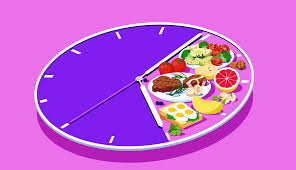Intermittent fasting is an increasingly popular dietary plan that involves alternating periods of eating and fasting. As a result, it can help you lose weight and improve your overall health. To make sure that your intermittent fasting experience is successful, you need to make sure that you have tasty meals and snacks on hand during your eating window. Here are some recipes to get you started.
Contents
What Is Intermittent Fasting?

People commonly practice intermittent fasting to lose weight, improve blood sugar levels, and reduce inflammation. Intermittent fasting is a pattern of eating that involves alternating periods of eating with periods of fasting. This means that you may eat for 8 hours a day and fast for the other 16 hours. During the fasting period, you should not consume any calories;
Intermittent fasting has been shown to have several health benefits, including weight loss, improved mental clarity, and decreased inflammation.
Intermittent fasting is an effective way to lose weight. A study published in the Journal of the American Medical Association found that intermittent fasting was more effective for weight loss than traditional diets.
Intermittent fasting has also been shown to improve mental clarity. A study published in the Journal of Alzheimer’s Disease found that intermittent fasting improved mental clarity and memory in people with Alzheimer’s disease.
Intermittent fasting has also been shown to decrease inflammation. A study published in the Journal of Clinical Nutrition found that intermittent fasting decreased inflammation in people with arthritis.
Types of Intermittent Fasting
There are a few different types of intermittent fasting that you can try out to see what works best for you and your lifestyle.
Time Restricted Eating
One of the more popular forms of intermittent fasting, time-restricted eating involves limiting yourself to a certain number of hours in which you can eat each day. This is typically 8-12 hours and includes dinner, snacks, and breakfast. Some also opt for a shorter window of 4-6 hours.
Alternate Day Fasting
This type of intermittent fasting involves eating a normal calorie diet one day, then having very limited calories the next day – usually only 25% of your usual daily intake. This pattern is repeated for two days at a time and can generally be done every other day or just a few days each week.
5:2 Diet
The 5:2 diet involves eating normally for five days out of the week and then fasting for two non-consecutive days. On your fasting days, you should consume about 500 calories or less during the day. This is typically done by eating one meal with a few snacks throughout the day.
Warrior Diet
The Warrior Diet has been around since 2001 and is based on the idea of intermittent fasting in which someone consumes only small amounts of fruits and vegetables during the day and then has a huge feast at night. The idea is that this type of eating mimics how humans ate thousands of years ago when hunting and gathering food was more difficult than it is today.
Fasting Mimicking Diet (FMD)
The Fasting Mimicking Diet is a low-calorie, nutrient-dense diet that can be done anywhere from 4 to 7 days per month depending on your body’s needs. This type of intermittent fasting involves eating plant-based whole foods with limited carbohydrates and proteins while consuming plenty of healthy fats and micronutrients. The idea is to give your body the nutrition it needs without overfeeding it, which helps promote weight loss and other health benefits.
Multi-Day Water Fasting
Water fasting involves drinking only water for some time – typically lasting 1–3 days or more in some cases — as a means to detoxify the body and stimulate weight loss. During this type of fasting, you should not consume any food or other beverages such as coffee or tea. This is a more extreme form of intermittent fasting and should only be done with medical supervision if needed.
No Food Fasting
Similar to water fasting, no food fasting involves abstaining from all foods for an extended period – usually, 1–7 days depending on the person’s preference. This type of intermittent fasting helps cleanse the body, detoxify organs and tissues, and promote healthy weight loss. Generally speaking, it can be beneficial to break up your fasts with smaller snacks in between meals to avoid feeling too hungry during your fasts.
13 Recipes for Intermittent Fasting

Intermittent fasting can be a great way to improve your health, but it can be difficult to stick to if you’re not used to it. That’s why we’ve put together this list of recipes that are perfect for those on an intermittent fasting diet.
From breakfast options to soups and main courses, we’ve got you covered with these delicious and nutritious recipes.
These are some of the meals you can enjoy while on an intermittent fasting plan:
- Egg and avocado breakfast tacos: One of the best ways to start the day is by having a protein-packed breakfast. These tacos are full of healthy fats and proteins that will keep you feeling full until lunch.
- Tomato and lentil soup: This soup is easy to make in just one pot. This makes it an ideal option for those busy days when you don’t have much time to cook.
- Chickpea salad wrap: This wrap is perfect for lunchtime or as a light dinner on nights when you don’t want to eat too much. The chickpeas provide plenty of protein and fiber, while the fresh vegetables add flavor and crunch.
- Turkey quinoa meatballs: These flavorful meatballs are made with ground turkey, quinoa, and spices for a healthier take on a dinner classic.
- Fried cauliflower rice: This fried “rice” is a great way to satisfy your cravings for Asian food without sacrificing your diet. It’s packed with flavor and nutrition, thanks to cauliflower and other vegetables.
- Veggie burgers: Veggie burgers are an easy way to get in plenty of protein while still eating something tasty. Top them with your favorite toppings and enjoy.
- Greek-style grilled chicken breast: Grilled chicken is always a good option when you’re on an intermittent fasting plan, especially if it’s made Greek-style with oregano, lemon juice, garlic, and olive oil.
- Zucchini noodles with pesto sauce: Zucchini noodles are a great low-carb option for those days when you don’t feel like eating a lot. Pesto sauce provides plenty of flavors and makes it even tastier.
- Veggie stir fry: Stir fries are an easy and nutritious way to get in lots of vegetables. You can mix up the veggies as you like, but try to keep something green in there.
- Salmon cakes: Salmon is full of healthy fats, which makes these cakes an excellent choice for dinner while on an intermittent fasting plan. They’re also tasty enough that non-dieters will enjoy them too.
- Chickpea curry: This vegan chickpea curry provides plenty of protein and delicious flavor. The coconut milk gives it a creamy texture that’s hard to resist.
- Vegetable frittata: This egg-based dish is full of vegetables and flavor, making it a great choice for breakfast or lunch. Hummus wrap: Wraps are always a good option when you’re in a hurry. This one is particularly tasty due to the hummus spread inside. It’s also high in fiber and protein so you’ll stay full until your next meal.
- Chocolate chia pudding: Chocolate lovers rejoice! This delicious chocolate treat is vegan, low-carb, and sugar-free – perfect for those on an intermittent fasting plan. These are for those who still want something sweet.
As you can see, there are plenty of options available if you’re following an intermittent fasting diet. We hope these recipes help you stick to your plan and stay healthy. Enjoy!
How To Do Intermittent Fasting?

Intermittent fasting is an eating pattern where you cycle between periods of fasting and eating. It’s a way to lose weight, improve your health, and feel more energetic.
There are many different ways to do intermittent fasting, but the most popular method is the 16/8 method. This involves fasting for 16 hours and eating within an 8-hour window. For example, you would stop eating at 8 p.m. and not eat again until noon the next day.
If you’re new to intermittent fasting, it’s best to start with the 16/8 method. Once you get used to this pattern, you can experiment with other methods, such as the 5:2 diet or alternate-day fasting.
To make intermittent fasting easier, try these tips:
Drink Plenty of Water
One of the most common side effects of intermittent fasting is feeling dehydrated. That’s why it’s important to drink plenty of water throughout the day. When you’re fasting, you can also drink calorie-free beverages such as herbal tea, black coffee, and sparkling water.
Eat Healthy Fats
Healthy fats can help keep you full for longer periods. Good sources of healthy fats include avocados, olive oil, nuts, nut butter, and fatty fish like salmon. These foods can help keep hunger at bay while you’re fasting.
Plan Your Meals Ahead of Time
Planning your meals ahead of time can make it easier to stick with an intermittent fasting schedule. Decide what you will eat during your eating window and prepare foods in advance. You can also meal prep on the weekends or use a meal delivery service so that all your meals are ready to go when it’s time to eat.
Listen to Your Body
Intermittent fasting may not be right for everyone, so pay attention to how your body responds. Talk with your doctor if you experience any symptoms such as dizziness, fatigue, or headaches. They can help determine if intermittent fasting is safe for you and make sure that you’re getting the nutrients your body needs.
Make Meal Prep Easier
Meal prep is an important part of intermittent fasting since it helps to ensure that you have healthy food options available during your eating window. Make sure to plan and cook meals in bulk on the weekends. This is so that you can easily reheat them throughout the week. You can also make some simple snacks ahead of time like hard-boiled eggs or a veggie-filled wrap.
Intermittent fasting is a great way to lose weight, improve your health, and increase energy levels. By following these tips, you can make it easier to stick with an intermittent fasting schedule.
Conclusion
Intermittent fasting is an effective way to reduce body weight, improve biomarkers of health, and maintain healthy eating habits. It can also help you create a structure for healthy living that may even last beyond the actual fast. With proper precautions and guidance from your healthcare provider, intermittent fasting can be a safe and beneficial approach to reaching your goals.
While there are some potential risks associated with intermittent fastings such as dehydration or nutrient deficiencies, these can be avoided by taking precautions such as drinking plenty of fluids and eating nutrient-dense foods during non-fasting periods.
Consider contacting FitMantra for additional information on nutrition and fitness. You can also get in touch with their nutrition experts through our online nutrition counseling, who can guide you through the process and help you achieve your fitness goals. You can also lose weight with the help of our weight loss program. Download our Fitness app on Android to learn more about us.
